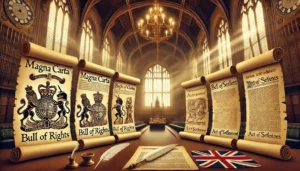7. Trust Structure
When Henry II first started to find commonalities between the shires, we began to see universal agreements between wo/men. The agreements between these parties grew into parliament whereby acts, statutes, regulations and codes were documented. As cases were heard it was agreed that previous cases would be considered, and the rulings of those cases applied to similar issues. Our use of case precedents as authority in subsequent cases (where there are similar issues or facts) gives us good guidance on how courts will perceive, receive and react to potential future issues.
The principle by which judges are bound to precedents is known as stare decisis (a Latin phrase with the literal meaning of “to stand in the-things-that-have-been-decided”)
When it comes to the correct and accepted structure for trusts, there must be adherence to the three certainties. This precept came from the case Knight vs Knight 1840. Hearing this case, Lord Langdale formulated a legal test, now known as the three certainties.
- Certainty of intention: there must be intention to create a trust.
- Certainty of subject matter: the assets constituting the trust must be readily determinable.
- Certainty of objects: the people to whom the trustees are to owe a duty must be readily determinable.
Certainty of Intention
As mentioned previously, equity looks at the heart of the matter, and the intent of the settlor in the creation of the trust must be clearly stated.
Certainty of Subject Matter
The property held in the trust must be clearly identified and specific. If it is ever required that a court needs to administer the trust, there must be sufficient certainty of the property held in the trust. Therefore, it is very important that the property is clearly recorded, and these records are kept up to date.
Certainty of Objects
The objects are the offices, the people who are party to the trust. The settlor, trustees and beneficiaries must be recorded and again, if a court needs to administer the trust, the beneficiaries need to be identified so that the beneficiary principle is satisfied. The beneficiary principle requires that parties who are to benefit from the trust are clearly identified.












